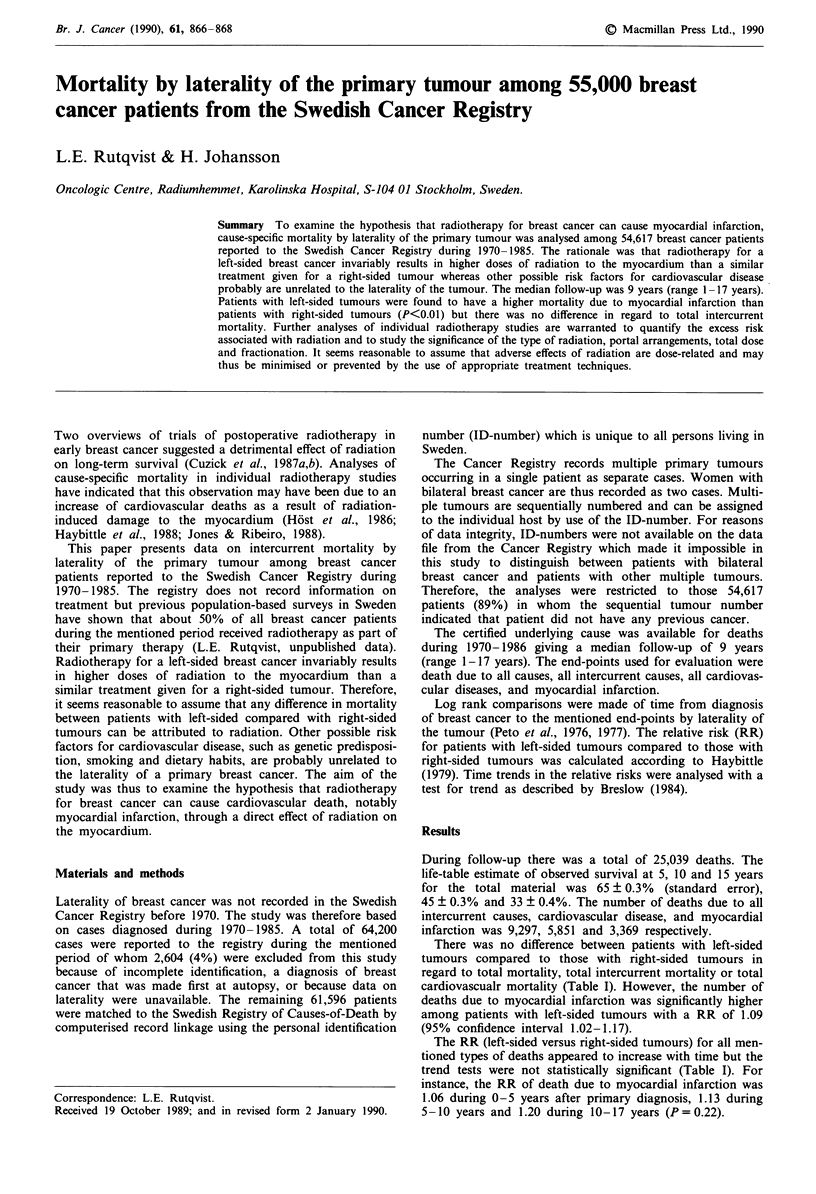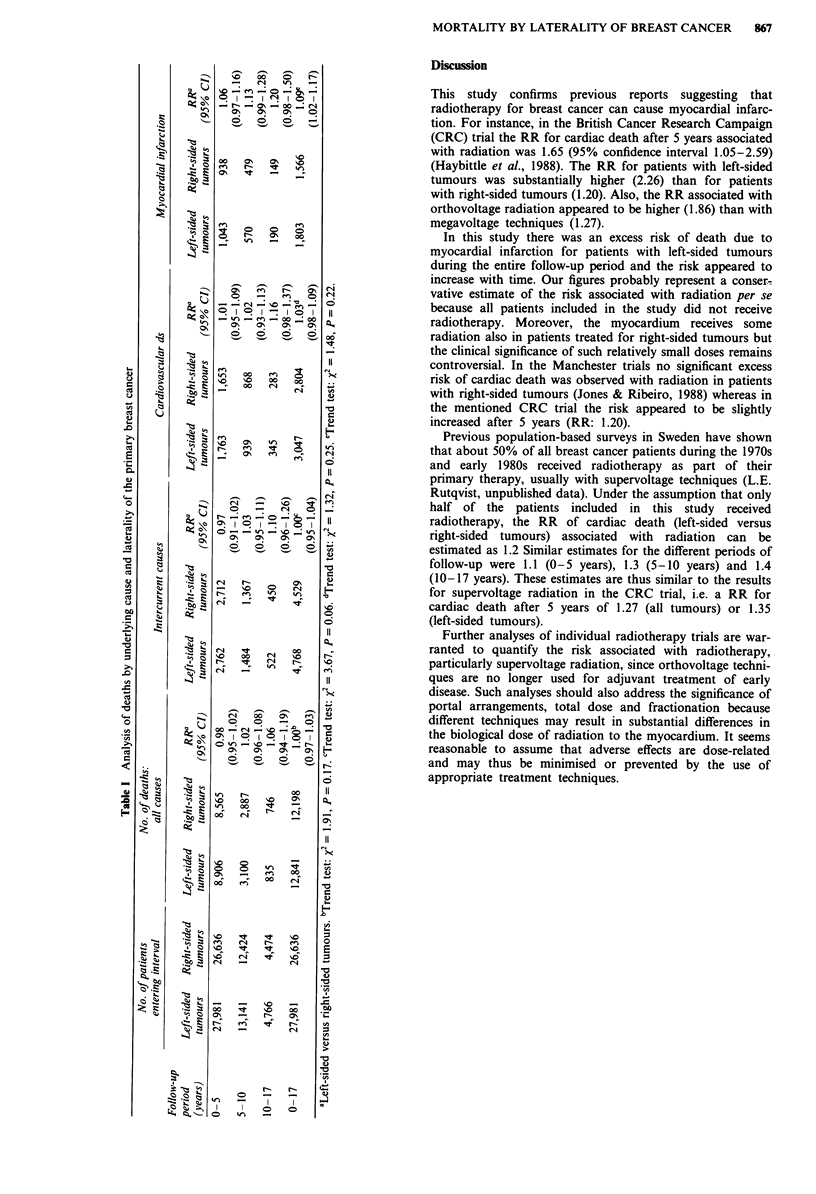Abstract
To examine the hypothesis that radiotherapy for breast cancer can cause myocardial infarction, cause-specific mortality by laterality of the primary tumour was analysed among 54,617 breast cancer patients reported to the Swedish Cancer Registry during 1970-1985. The rationale was that radiotherapy for a left-sided breast cancer invariably results in higher doses of radiation to the myocardium than a similar treatment given for a right-sided tumour whereas other possible risk factors for cardiovascular disease probably are unrelated to the laterality of the tumour. The median follow-up was 9 years (range 1-17 years). Patients with left-sided tumours were found to have a higher mortality due to myocardial infarction than patients with right-sided tumours (P less than 0.01) but there was no difference in regard to total intercurrent mortality. Further analyses of individual radiotherapy studies are warranted to quantify the excess risk associated with radiation and to study the significance of the type of radiation, portal arrangements, total dose and fractionation. It seems reasonable to assume that adverse effects of radiation are dose-related and may thus be minimised or prevented by the use of appropriate treatment techniques.
Full text
PDF


Selected References
These references are in PubMed. This may not be the complete list of references from this article.
- Breslow N. E. Elementary methods of cohort analysis. Int J Epidemiol. 1984 Mar;13(1):112–115. doi: 10.1093/ije/13.1.112. [DOI] [PubMed] [Google Scholar]
- Haybittle J. L., Brinkley D., Houghton J., A'Hern R. P., Baum M. Postoperative radiotherapy and late mortality: evidence from the Cancer Research Campaign trial for early breast cancer. BMJ. 1989 Jun 17;298(6688):1611–1614. doi: 10.1136/bmj.298.6688.1611. [DOI] [PMC free article] [PubMed] [Google Scholar]
- Høst H., Brennhovd I. O., Loeb M. Postoperative radiotherapy in breast cancer--long-term results from the Oslo study. Int J Radiat Oncol Biol Phys. 1986 May;12(5):727–732. doi: 10.1016/0360-3016(86)90029-5. [DOI] [PubMed] [Google Scholar]
- Jones J. M., Ribeiro G. G. Mortality patterns over 34 years of breast cancer patients in a clinical trial of post-operative radiotherapy. Clin Radiol. 1989 Mar;40(2):204–208. doi: 10.1016/s0009-9260(89)80099-6. [DOI] [PubMed] [Google Scholar]
- Peto R., Pike M. C., Armitage P., Breslow N. E., Cox D. R., Howard S. V., Mantel N., McPherson K., Peto J., Smith P. G. Design and analysis of randomized clinical trials requiring prolonged observation of each patient. I. Introduction and design. Br J Cancer. 1976 Dec;34(6):585–612. doi: 10.1038/bjc.1976.220. [DOI] [PMC free article] [PubMed] [Google Scholar]


